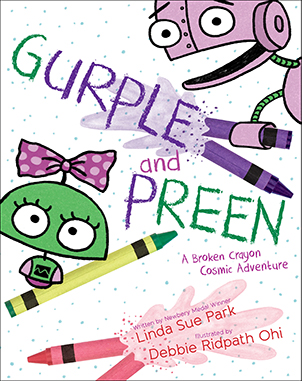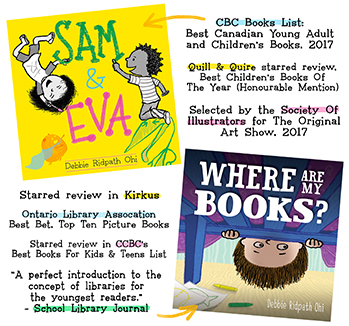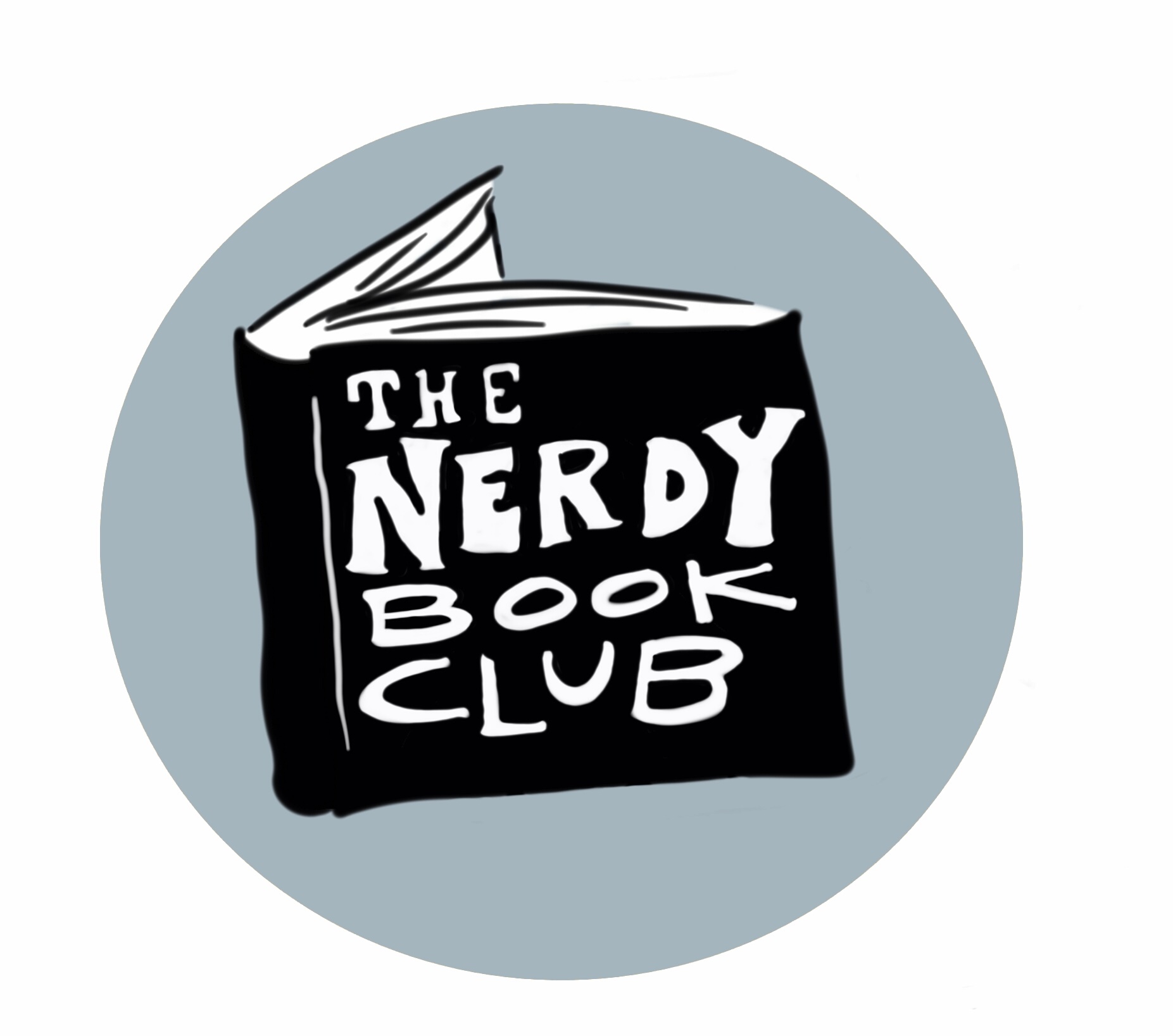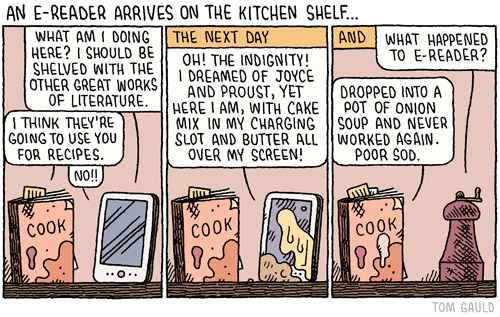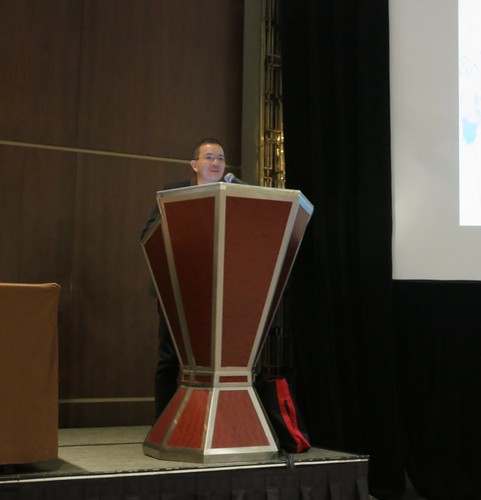Welcome to Inkygirl: Reading, Writing and Illustrating Children's Books (archive list here) which includes my Creating Picture Books series, Advice For Young Writers and Illustrators, Writer's and Illustrator's Guide To Twitter, Interviews With Authors And Illustrators, #BookADay archives, writing/publishing industry surveys, and 250, 500, 1000 Words/Day Writing Challenge. Also see my Inkygirl archives, and comics for writers. Also check out my Print-Ready Archives for Teachers, Librarians, Booksellers and Young Readers.
I tweet about the craft and business of writing and illustrating at @inkyelbows. If you're interested in my art or other projects, please do visit DebbieOhi.com. Thanks for visiting! -- Debbie Ridpath Ohi
Entries from February 1, 2013 - February 28, 2013
Interview with Rachel Poloski: Production Associate at Abrams/Amulet Books (and my 24,000th Twitter follower!)
Thanks to Rachel Poloski for being the 24,000th person to follow my @inkyelbows Twitter account. When I went to check her profile, I was intrigued:
Rachel was kind enough to answer some questions for Inkygirl about her work.
Q. Your profile says that you work in production at Abrams on YA and children's books. Could you possibly tell us more?
 Of course! I work specifically on Amulet Books, which is an imprint of Abrams focusing on fiction and non-fiction writing for middle grade and young adult readers. I also work on reprints across all the children's imprints; Abrams Books for Young Readers, Appleseed, and Amulet Books.
Of course! I work specifically on Amulet Books, which is an imprint of Abrams focusing on fiction and non-fiction writing for middle grade and young adult readers. I also work on reprints across all the children's imprints; Abrams Books for Young Readers, Appleseed, and Amulet Books.
I like to think of Production as the behind-the-scenes of book making. You don’t always see our names in the book or know who we are, but we are involved from start to finish. As production manager of a title, you begin by providing estimates on a book that has not yet been acquired. This enables editors, publishers, and our CEO to discuss the possibilities for the title and if it will work for Abrams. Once a book is acquired, you start forming a schedule based on a publication date or when advances of books are needed.
I work closely with Managing Editorial, Editorial, and Design to keep the schedule on track as well as start working out the book’s specifications. By this I mean the cover stock, text stock, cover effects, inks, trim size, etcetera. We also work out effects on the jacket/cover, which include lamination, embossing, glitter uv (ultra-violet coating), glow in the dark uv, metallic inks, cloth cases, and much more!
For the books I work on, this is the exciting work! Production managers have to be creative and provide ideas to editorial and design in order to bring their ideas to fruition, while maintaining a budget and schedule. Sometime we need to think outside the box and research materials or effects that will accomplish the look and feel the editor and designer desire.
 Q. What recent or upcoming Abrams books are you especially excited about?
Q. What recent or upcoming Abrams books are you especially excited about?
I am really excited about working on all my upcoming titles, but specifically I am enthusiastic to work on a new Lauren Myracle title and the final book in the NERDS series written by Michael Buckley! I also just finished working on the paperback edition of Me and Earl and the Dying Girl by Jesse Andrews, which is most definitely my favorite book published at Abrams. It is funny, endearing, unique, and moving. I also had the pleasure of running into Jesse Andrews in the Abrams elevator and he is equally as charming as his writing. He is a both kind and humble. Another hardcover to paperback title I am thrilled to work on is Roddy Doyle’s A Greyhound of a Girl. Such a fantastic book! In Spring 2014 I am also working on new books from Lisa Greenwald and Sarah Skilton, which I am also eagerly anticipating.
Q. What do you write? (aside: I notice that you're a columnist for the Abrams site, for example)
 Phillip, by Rachel PoloskiAh, yes. I do write for the Abrams blog, mostly about cooking and then there is the one of me shooting a rifle in the Adirondacks. Don’t worry; this is not a regular sport for me. I do love to cook and bake, therefore writing about it is also pleasurable. Luckily, Abram’s imprint Stewart, Tabori & Chang publishes beautiful and yummy cookbooks for me to test out in the kitchen!
Phillip, by Rachel PoloskiAh, yes. I do write for the Abrams blog, mostly about cooking and then there is the one of me shooting a rifle in the Adirondacks. Don’t worry; this is not a regular sport for me. I do love to cook and bake, therefore writing about it is also pleasurable. Luckily, Abram’s imprint Stewart, Tabori & Chang publishes beautiful and yummy cookbooks for me to test out in the kitchen!
I also do some writing personally, either about silly characters I draw or about my coveted stuffed cat, Celeste. I like to make up names and personas for the little felted creatures I hand make, but nothing that I have published or shared with the world. Maybe there will be some short stories to come soon. I recently illustrated a nervous soul named Phillip. I think I might write a little piece on him.
Q. Where can people find you online?
Twitter: https://twitter.com/rachel_poloski
Pinterest: http://pinterest.com/rachelapoloski
Instagram: http://instagram.com/rachel_anne_poloski
Etsy: http://www.etsy.com/people/rpoloski
I will hopefully have some felted creatures as well as some little felted naked people up on Etsy soon and I really would love to start my own blog. What’s stopping me you might ask? Me. Fortunately, I have slowly been putting myself out there on both Instagram and Twitter and its not so scary after all. I am proud of me and would love to share my zany thoughts.
-------
Also see other Inkygirl Interviews.
 Wednesday, February 27, 2013 at 9:58 AM |
Wednesday, February 27, 2013 at 9:58 AM |  Post a Comment |
Post a Comment |  Email Article |
Email Article |  Share Article |
Share Article |  Permalink
Permalink Review: GroovBoard - Lap writing desk and stand for the iPad
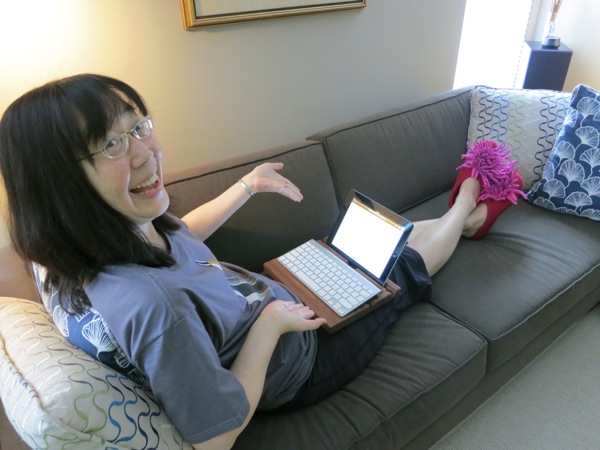
I had never heard of the Groovboard until Thomas Borowski approached me via Twitter about reviewing his company's product. I generally don't do product reviews anymore but when I checked out the GroovBoard website, I was so intrigued that I asked Thomas a few questions and then said I'd be happy to check one out.
The GroovBoard functions as an lap desk and an iPad stand, with grooves for inserting your iPad and a Bluetooth keyboard (in flat mode, I found I didn't really need the keyboard groove; see above photo) as well as built-in holders for a stylus.
One of my first questions to Thomas: "How heavy is it?" The answer: Depending on the type of wood, a Groovboard can weigh between 1.7 to 2.6 lbs (800-1200 grams). I asked for the lightest type, so Thomas sent me the American walnut model:

My GroovBoard arrived from Germany in good condition, and I immediately tried it out to see what the weight was like:
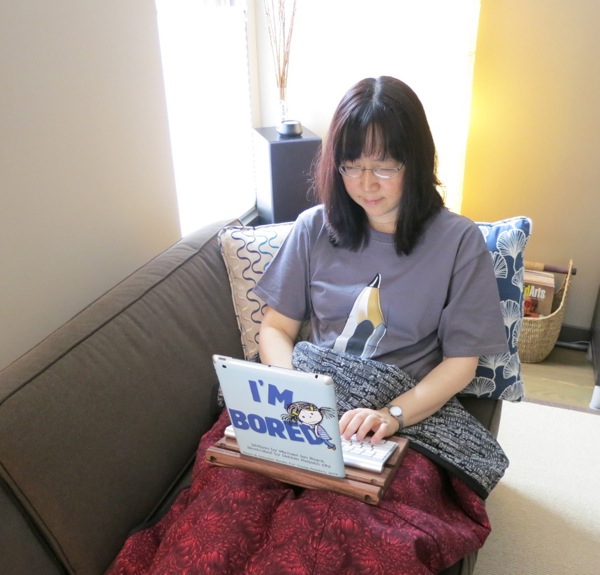
(Above: I'm wearing the cool Autodesk Sketchbook t-shirt I got at Febtor)
Good news: I don't notice the weight at all. It's sturdy enough that I don't feel as if my iPad is going to tip it over, but it's not so heavy that the weight is uncomfortable. It's a bit too bulky for me to want to travel with it, but it's perfect for couch writing. According to the website, there is also a GroovBoard cushion available.
The GroovBoard also separates into two pieces in case you want to use it as an iPad stand/prop for watching movies or typing with or without the keyboard:
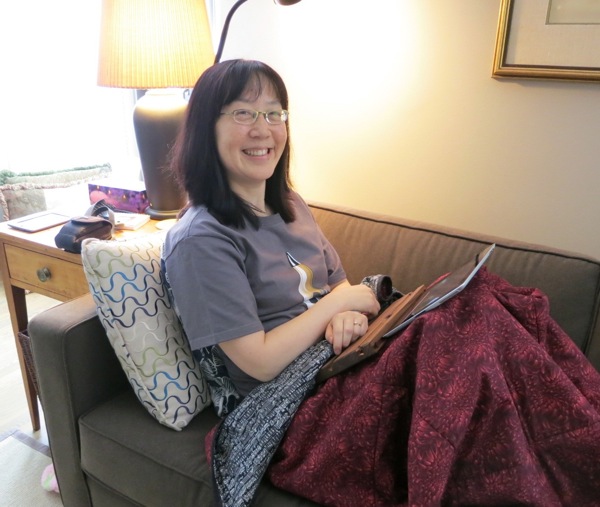
If you want to use it this way with a keyboard, just hang the keyboard from the upper groove:

That photo is from the GroovBoard site, by the way -- I don't wear nail polish. :-)
SUMMARY:
I've been using the GroovBoard for several weeks now, and I love it. So does my husband -- he plans to order one for himself. I keep my GroovBoard in the living room beside the couch. Some might also use it to do writing or watching movies in bed.
The model I reviewed (GroovBoard Walnut) costs $129 fro non-EU customers, plus shipping.
Where to find out more:
Website: http://groovboard.co
Twitter: https://twitter.com/groovboard
Facebook: https://www.facebook.com/Groovboard
In The End, It's All About Young Readers

The whole I'M BORED adventure has been amazing and continues to be amazing. Whenever things start to settle, something else happens that reminds me all over again to appreciate every moment.
I was floored about how it all began, with a rejection and a friend's encouragement. Then came the Simon & Schuster BFYR book illustration contract and the SCBWI Illustrator Mentorship program. Then the fun and immense satisfaction in collaborating with my editor and art director on the project.
Because I had been so focused on just trying to get published in past years, I underestimated how much joy I would get from reader feedback. Wow.
Experienced authors and illustrators out there are likely much more used to this, but I'M BORED is my first children's book project and I'm still getting used to the fact that people out there -- people who aren't related to me and don't know me -- are looking at my illustrations in a published book they bought or borrowed.
From Paula Speer White, who sent me the photo above: "This book is excellent for teaching verbal irony at the secondary level and self-efficacy at the elementary level~I give it a 10! Humorous, courageous, and witty!"
I've heard from some parents whose children have learning challenges or who are slow readers, who delight in the humor and want to read the book over and over again.
Parents tell me that their older children are enjoying the book as well, reading it on their own.
Librarians tell me that I'M BORED has become a favorite with their young readers. I so love the idea of a copy of the book eventually becoming battered and dog-eared because of constant use.
I think about a young person sitting down with a copy of I'M BORED, or perhaps having the book read to them by an adult, and try to imagine what happens as they listen to the story. Does it make them laugh out? Does it engage their imaginations? Do they identify more with the little girl or the Potato? Does the experience engage them enough to encourage a greater love of books and reading?
Does it change them for the better, even in a very tiny way?
Oh, I truly hope so.
What I've come to realize: While it's good to keep the market in mind (particularly if you want to get your work accepted by a traditional publishing house), remember that it's all about young readers. In the end, we create the magic for them, not the industry.
-----
For more fun photos, see the I'M BORED In The Wild reader gallery. If you'd like to submit a photo, here's how.
Teachers: if your class sends me snaimail about I'M BORED, I'll write back (with doodles!).
Interview with John Martz, illustrator of WHO'S ON FIRST by Abbott & Costello (Quirk Books)
I first met John Martz at a National Cartoonist Society party in Toronto a few years ago and am also a fan of his popular illustration and cartooning blog Drawn. In addition to his professional comics work, John is the illustrator of several picture books including Dear Flyary from Kids Can Press, written by Dianne Young, and most recently he adapted the classic Abbott & Costello routine Who’s on First? into a picture book from Quirk Books. His first graphic novel, Destination X, will be released in May from Nobrow Press. John is also the founding editor of the popular illustration and cartooning blog Drawn.
Q. How did this project begin?
I was approached by the publisher, Quirk Books. I got the email while I was sitting in a coffee shop in Wellington, New Zealand on my honeymoon, which was a nice addition to the trip. The book was published in cooperation with the estates of Abbott and Costello, so there were no copyright hurdles that needed jumping, at least not in regards to my duties -- the material was already approved by the time I was brought aboard.

Q. What was your illustration process for WHO'S ON FIRST?
The manuscript for the book was essentially the script from the original Who's on First? comedy routine verbatim, although there were a few things removed or edited just for simplicity and kid-friendliness. Because the material is completely dialogue-driven, it was a given that the story would be presented in comic-book-style with speech bubbles.
 My first task was breaking down the dialogue into pages and spreads. I printed out the script and cut out the different pieces of dialogue so I could manually move the bits of paper about until I had figured out the optimal breakdown from which to start thumbnailing. They took up the entire floor of my studio. The illustrations were created digitally, but this physical cut-and-paste way of figuring out pacing and is much easier when you can just move stuff around at will and stand back to look at everything.
My first task was breaking down the dialogue into pages and spreads. I printed out the script and cut out the different pieces of dialogue so I could manually move the bits of paper about until I had figured out the optimal breakdown from which to start thumbnailing. They took up the entire floor of my studio. The illustrations were created digitally, but this physical cut-and-paste way of figuring out pacing and is much easier when you can just move stuff around at will and stand back to look at everything.
The process was pretty straightforward then -- I presented the publisher with a thumbnailed version of the book, I incorporated their feedback into the first draft, and then after an additional round of feedback, I completed the final illustrations. As for character design, I was told I didn't need to worry about making the characters look like Abbott and Costello themselves, and that the characters should be animals.
Q. What advice do you have for aspiring children's book illustrators?
 This is only my second picture book, so I'm still a relative newcomer to the field. Attending comics shows like the Toronto Comics Arts Festival and SPX in Maryland has been a great way to meet and interact with publishers and fellow artists. My first picture book Dear Flyary, written by Dianne Young, was the direct result of meeting my editor while manning my table at TCAF.
This is only my second picture book, so I'm still a relative newcomer to the field. Attending comics shows like the Toronto Comics Arts Festival and SPX in Maryland has been a great way to meet and interact with publishers and fellow artists. My first picture book Dear Flyary, written by Dianne Young, was the direct result of meeting my editor while manning my table at TCAF.
I'm still learning a lot about self-promotion. I'm a little leery of the hard sell online because it contradicts the types of artists and writers I tend to follow on Twitter and social media. Genuineness goes a long way online, and I prefer to follow creative types whose updates aren't just a stream of self-promoting ads. I end up supporting the artists, instead, that provide me with a real sense of personality and likemindedness who produce great work. I think it's a delicate balancing act between promoting your work and trying not being a carnival barker.
My method is to just be myself online, and develop the trust and goodwill with the small-but-growing audience I have, and to hope that when I have new work to share, that my friends and fans and readers will be receptive and want to share it as well.
Q. What are you working on now? Any other upcoming events or other info you'd like to share?
I just finished my third picture book, Black and Bittern Was Night by Robert Heidbreder, which will be out from Kids Can Press in time for Halloween, and I have a science fiction graphic novel called Destination X that will be out from Nobrow Press in May, debuting at TCAF. A collection of my webcomic Machine Gum will also be debuting at TCAF from La Pastèque.
Where you can find more info about John Martz:
Website: www.johnmartz.com
Twitter: @johnmartz
-------
Also see other Inkygirl Interviews.
The Book Mind Of Tom Gauld (Drawn & Quarterly)
Above and below: samples of the book-friendly cartoons by Tom Gault, whose YOU'RE ALL JUST JEALOUS OF MY JETPACK is being published later this year by Drawn & Quarterly. I have to buy this book!
See more samples of his comics in BookPatrol as well as Tom's Tumblr blog.
MicroBookReview: DEATH WATCH by Ari Berk
 Love this. It's the kind of book I want to read slowly, to immerse myself in the atmosphere. Gorgeous prose. It gave me nightmares...but in a good way.
Love this. It's the kind of book I want to read slowly, to immerse myself in the atmosphere. Gorgeous prose. It gave me nightmares...but in a good way.
I just bought the sequel, Mistle Child, and can't wait to read it!
Author: Ari Berk.
Publisher: Simon & Schuster Books For Young Readers.
-------
Click on my "microbooktweet" tag to browse some of my other micro-length book reviews and tweets. Please note that I am not seeking new books to review; I usually only review books already in my To Read pile.
Happy International Book Giving Day!
It's International Book Giving Day! The goal: to get as many new, used and borrowed books into the hands of as many children as possible. You can celebrate this EVERY day, of course: find out how.
I created a special bookplate in honor of the occasion. You can download it from the International Book Giving Day website.
And...
SCBWI-NYC Takeaway #2: Meg Rosoff, children's books and changing lives
I loved Meg Rosoff's HOW I LIVE NOW, and I look forward to reading her other books. I had never seen Meg in person, so was looking forward to hearing her keynote at the SCBWI Winter Conference. Meg is wonderfully blunt, witty, opinionated. And very, very funny.
One of the things Meg said in her keynote really hit home: That sometimes we get so caught up in worrying about how to get published, promotion, reviews and sales figures that we forget to remind ourselves of how important our books can be to children, and how our books can change their lives.
To be clear: I want to make a living at creating children's books; it's not just a hobby for me, so I DO need to appreciate the business side. However, I think I also need to remind myself more often about one of the reasons I love children's books so much.
Books affect me as an adult, but not nearly as deeply as they did when I was a child. My view of the world and myself changed so much as a result of reading books back then, for good and for bad. There were books that became part of me and are still part of me. Reminding myself of how important books were to me as a young person will not only help motivate me to craft better stories but also help me persevere when the publishing process gets difficult.
Something else that Meg said that I wish more aspiring children's book authors would understand: children are not dumbed-down adults. I've seen so many mss that talk down to young readers in a way that makes me wonder if the author has forgotten what it was like to be a child himself/herself.
---
For more info about Meg Rosoff and her work: http://www.megrosoff.co.uk/
For more info about the SCBWI: http://www.scbwi.org/
SCBWI-NYC Takeaway #1: Shaun Tan & The Importance of Maintaining A Bubble Of Delusion

For those who haven't yet heard the term, conference takeaways are generally regarded as insights or key points that someone who attends brings away from the event. It differs for everyone, based on their own level of experience and context.
I'm going to be sharing some of my takeaways, starting with Shaun Tan.
I've long admired Shaun Tan's work. The quirky/dark have always had a strong appeal to me (see my Little Nightmares Flickr set from ten years ago as an example), and someday I'm going to write and illustrate a picture book in this style. My main challenge: to figure out a way of doing dark without overwhelming the book with too much dark, if that makes any sense. Having a good story is the most important, of course. I've been working on ideas for ages but haven't been happy with any of them yet. Someday, though. These Little Nightmare guys keep bugging me to find the right story for them.
But I digress.
One of my biggest takeaways from the conference was Shaun Tan's advice to artists about the necessity of creating a Bubble of Delusion in which they feel safe to experiment and create. This applies to writers just as much as illustrators, I believe.
-----------------
A few of Shaun Tan's thoughts on the Bubble Of Delusion:
(Please note that these are my notes taken during the Illustrators' Intensive, so are subject to interpretation/misinterpretation)
- Set up a safe space in which you feel positive about yourself and your work, and know that you will do great work.
- Surround yourself with encouraging people.
- Avoid negativity, and try to steer clear when you see it coming. Shaun says he doesn't read reviews. I don't think I'd have the willpower to avoid reading reviews completely, but I do what I can to keep from interacting with negative people. Sometimes it can't be helped, but I do what I can in the future to limit the interaction.
-----------------
I've experienced this myself recently, though it was necessary bad stuff (like getting an injured limb re-broken so it could heal properly).Trying to work on anything creative, however, was like walking against a gale force wind…I could do it, but it was an effort rather than the fun it usually is. Not good.
What I'm Doing To Help Maintain My Own Bubble Of Delusion:
1. Doodling something purely for the fun of it every day, no matter how busy I am. I used to draw for fun all the time! I need start doing that again. I'll post some of these daily doodles online (on DebbieOhi.com), but some I won't…these drawings are for myself.
2. Write something purely for the fun of it every day, no matter how busy I am. I'm getting back to my private journal again, my equivalent of Morning Pages.
3. Do what I can to avoid industry angst. I love social media and online communities, but sometimes I let myself get too caught up in worrying about sales figures, publishing politics, conflicting advice, peer envy.
My advice to you all, especially those who are trying to find their own writing or illustration style: do what you can to create your own Bubble of Delusion. And then when you're doing something creative, STAY IN THE BUBBLE. It's impractical and inadvisable to stay in the Bubble all the time, of course -- we all need to deal with the other Stuff in life, plus the other Stuff helps to inspire and motivate us.
For me, one of the keys is staying off the Internet when I'm trying to create. What do you do to maintain your Bubble? Feel free to post below.
For more info about Shaun Tan and his work, see his website.
For more info about the SCBWI, see the SCBWI website.
Interview with Jo Knowles on writing process, writer advice & SEE YOU AT HARRY'S
 I've been a fan of Jo Knowles ever since reading Lessons From A Dead Girl and even more so after See You At Harry’s (Candlewick, 2012) plus I love her fun and positive tweets from @JoKnowles on Twitter. I've also heard great things about Jo's Pearl and Jumping Off Swings, so am looking forward to reading those next!
I've been a fan of Jo Knowles ever since reading Lessons From A Dead Girl and even more so after See You At Harry’s (Candlewick, 2012) plus I love her fun and positive tweets from @JoKnowles on Twitter. I've also heard great things about Jo's Pearl and Jumping Off Swings, so am looking forward to reading those next!
Jo has a master’s degree in children’s literature and taught writing for children in the MFA program at Simmons College for several years. Some of her awards include a New York Times Notable Book of 2012, Amazon's Best Middle Grade Books of 2012, An International Reading Association Favorite 2012 Book, an SCBWI Crystal Kite Award, the PEN New England Children's Book Discovery Award, and YALSA's Best Fiction for Young Adults. Jo lives in Vermont with her husband and son. Her next book, Living With Jackie Chan, a companion to Jumping Off Swings, will be available September 2013.

Q: What's your writing process? What was your writing process for SEE YOU AT HARRY'S?
So far for all of my books, I've just started writing and discovered the book as I went. Not surprisingly, my first drafts are big messes. After I clean things up a bit and have a basic rough draft, I create a storyboard to help me get organized and figure out the themes, plot and rhythm of the book.
 Storyboard from Jumping Off Swings.
Storyboard from Jumping Off Swings.
The storyboard process I use I learned at a workshop with Carolyn Coman. Basically, you get a sheet of paper that's large enough to fit enough squares to represent each chapter of the book. Then you follow these steps:
1. Think of a scene with the strongest image that best represents that chapter. Draw it as best you can in the first box.
 Part of a storyboard series from READ BETWEEN THE LINES, Jo's newest project.
Part of a storyboard series from READ BETWEEN THE LINES, Jo's newest project.
2. Write a very brief phrase that describes the point of that chapter and write it in the bottom of the box.
3. Think of the strongest emotion conveyed in the chapter and write it at the top of the box.
Repeat for each chapter, one per box.
 Part of a storyboard series from READ BETWEEN THE LINES, Jo's newest project.
Part of a storyboard series from READ BETWEEN THE LINES, Jo's newest project.
This leaves you with a big visual that illustrates the movement of the book both actively and emotionally.
 Part of a storyboard series from READ BETWEEN THE LINES, Jo's newest project.
Part of a storyboard series from READ BETWEEN THE LINES, Jo's newest project.
Since my books tend to be less action driven and more emotionally driven, seeing the book this way is a big help. I can see the spikes of emotion and how they play out in the text, and where I need to insert more or less action, or emotional peeks.
Seeing the images also helps me to think about how stagnant certain chapters or groups of chapters might be, and helps me pinpoint where I need to move my character around more. (For example, in PEARL, Bean spent way too much time on the roof, which was her place to escape. I don't know that I would have realized this if I hadn't drawn a storyboard and had that visual.)
Q: What advice do you have for aspiring writers?
Remember that getting published is not a race. I recently read a blog post by someone who had taken three years to sell her first book, referring to her journey as "The Long Road to Publication." Long road? Three years?? Oh my.
In reality, I think the average time it takes most people going the traditional publishing route is more like ten. I think people tend to measure success on how quickly they can sell their first book. This is a shame because speed has nothing to do with it. I think longevity AFTER you sell your book would be a better marker.
 Childhood restaurant that inspired Harry's in SEE YOU AT HARRY'S.If you want to be an author, you need to take time to learn the craft and learn it well. Read a thousand picture books. Study the rhythms of your favorites. Type out the text and close- read it without the pictures. Pay attention to the types of details that are in the text versus the ones that are implied or easily and more effectively shown in the illustrations.
Childhood restaurant that inspired Harry's in SEE YOU AT HARRY'S.If you want to be an author, you need to take time to learn the craft and learn it well. Read a thousand picture books. Study the rhythms of your favorites. Type out the text and close- read it without the pictures. Pay attention to the types of details that are in the text versus the ones that are implied or easily and more effectively shown in the illustrations.
The next step is to learn how to revise. To learn how to listen to feedback and make the best use of it. I can't tell you how many aspiring writers I've met who have told me they didn't want feedback because they felt their work was as polished as it could get. But they hadn't shared it with anyone but family members!
One of the hard lessons I learned when I first started out was that I really didn't understand what revision meant. When an editor suggested a revision without a contract, I happily addressed the changes she proposed, but not to the degree I should have. I tweaked, I didn't revise. There is a very big difference.
Revising is rewriting. Not rearranging. Not fixing typos. Not deleting a sentence here and there. That’s what you do at the copyediting stage. Better to learn this with critique partners guiding you than with an editor who doesn’t have the time or patience to teach you him- or herself.
There is just so much to learn and so many early mistakes to be made when you're first starting out. It's worth it to take your time and get lots of feedback from other writers (and make those mistakes with them, not an agent or editor). Not only that, you will develop some wonderful relationships and create a community–a support network–which will be invaluable when you DO start submitting.
I am as impatient as the next person, but for new writers, I can't emphasize this enough: Please don't treat the time it takes you to get published as a race, or measure your journey against someone else's and use that as a marker for success and failure. Instead, think of your journey to publication as a travel experience to savor. The more you learn, the more people you connect with, the better prepared you will be for your final destination. And the more people you will have to celebrate your success with!
Q. What are you working on now? Any other upcoming events or other info you'd like to share?
I'm currently working on two projects. One is a contemporary YA novel called READ BETWEEN THE LINES. After writing JUMPING OFF SWINGS I swore I'd never write another book with multiple points of view, so naturally this book has ten. It's kind of a "day in the life" sort of story about how each character's actions affect the next. While I wait for my editor's comments on that, I've started a humorous middle grade/tween novel tentatively called FROM THE COMPLAINT BOX, about a boy who goes to a funky independent school and the adventures/mischief he gets into with his two best friends. When I told my agent I was writing something funny he said, "That's how you described SEE YOU AT HARRY'S and it made everyone weep!" So, he's suspicious. We'll see!
Where can find out more about Jo Knowles:
Jo Knowles website - Jo Knowles blog - Twitter (@JoKnowles) - Facebook
TWEETABLES:
Don't compare w/someone else's progress as your success/fail marker. Savor the journey. @JoKnowles bit.ly/11UDU4K (Tweet this)
Writers: Remember that getting published is not a race. - @JoKnowles: bit.ly/11UDU4K (Tweet this)
==========
Also see other Inkygirl Interviews.
MicroBookReview: THE DARKEST CORNER OF THE WORLD by Urve Tamberg

THE DARKEST CORNER OF THE WORLD
Author: Urve Tamberg
Publisher: Dancing Cat Books, an imprint of Cormorant Books
-------------
Had a fantastic time in NYC. More on this soon. But one of the books I read during the trip was Urve's The Darkest Corner Of The World, which is about a teen girl's struggle in Estonia during the World War II Soviet occupation.
I was never a huge history fan back in school. I got great marks, but that was only because I was very good at memorizing. As soon as the school year over, all the dates and facts I had spent hours committing to memory melted away like the last bits of dingy snow left after a long winter.
It was only years later that I began to become more interested in certain periods of history because of historical fiction I was enjoying. Caring about the characters made me care more about their world. After finishing a novel, I'd research using the library and (later) online resources to find out more.
I'm currently reading The Rise And Fall Of The Third Reich by William Shirer and enjoying it MUCH more than I expected. As a result, I'm also starting to seek out historical fiction tied in with related events. Code Name Verity was one, and The Darkest Corner Of The World was the latest.
Lots of fascinating details about Estonian culture and life back then, all skilfully woven into a fast-paced story about 15-year-old Madli and the difficult choices she must make in order to survive.
Click on my "microbooktweet" tag to browse some of my other micro-length book reviews and tweets.





